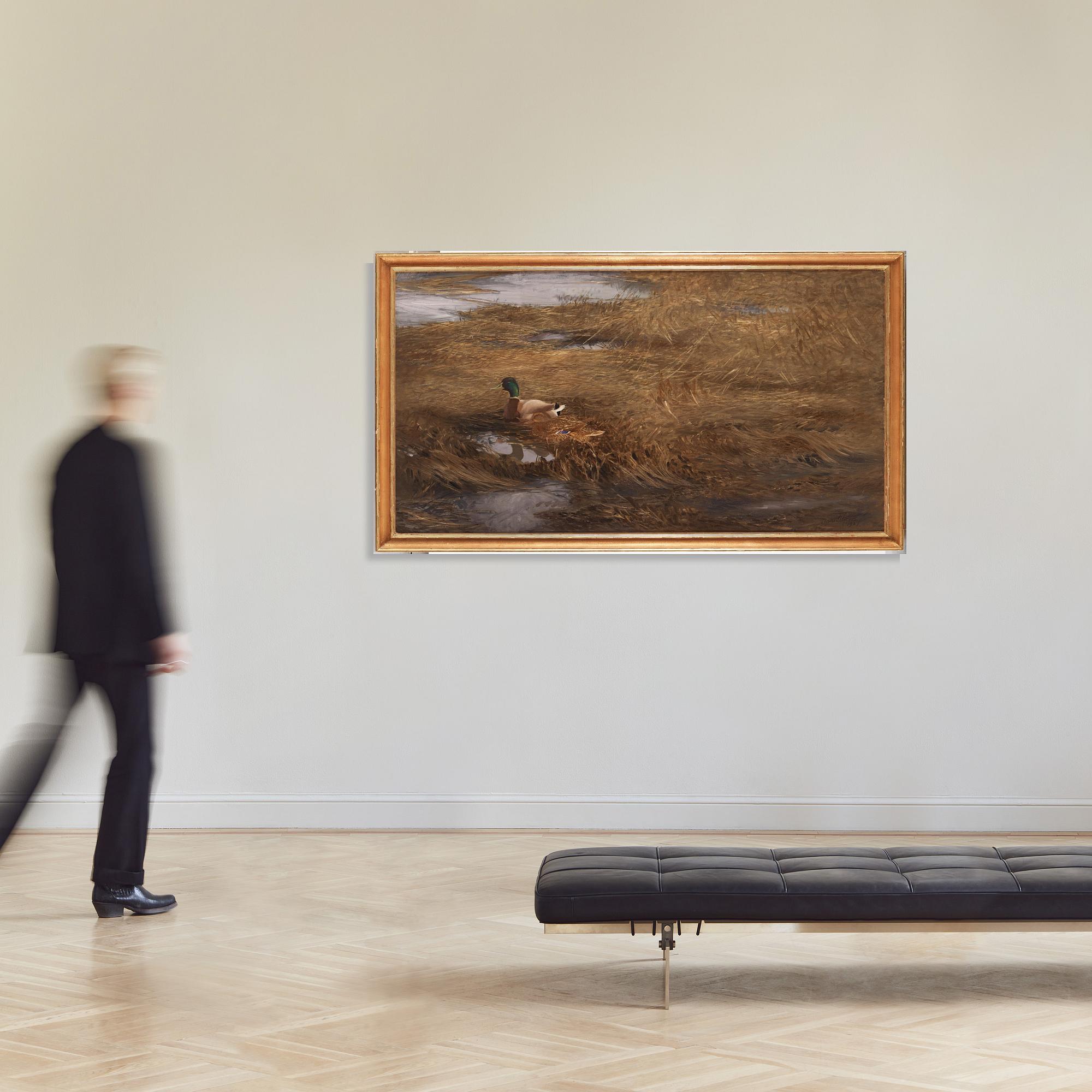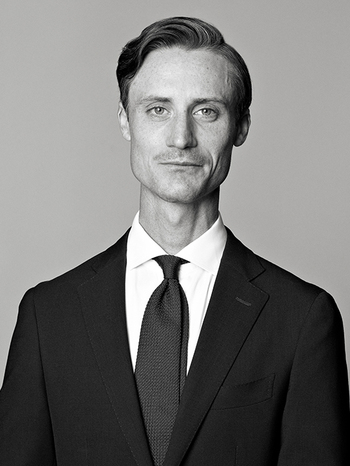Bruno Liljefors
Mallards in the reeds
Signed Bruno Liljefors and dated 1907. Oil on canvas 125 x 220 cm.
Alkuperä - Provenienssi
Pehr Swartz (1860 - 1939), industrialist, philantropist, and art collector, Norrköping, Sweden.
Beijer Auktioner, Stockholm, ”Klassiska Vårauktionen”, 26-28 April 1989, lot 196.
Nordén Auktioner, Stockholm, Skandinavisk konst - antikviteter, 24 November, 1992. lot 30.
Näyttelyt
Verein Berliner Künstler, Künstlerhaus, Bellevuestrasse 3, Berlin, travelling exhibition Germany, organized by Torsten Laurin, March - September 1907, cat. no. 11 (then belonging to Mr. Pehr Swartz, Sweden).
Göteborgs Konstmuseum, Sweden, "Bruno Liljefors", 25 January - 25 May 1997, cat. no. 13.
Prins Eugens Waldemarsudde, Sweden, "Bruno Liljefors", 20 september - 6 januari 1997, cat. no. 77.
Muut tiedot
The painting Mallards in the Reeds was executed in 1907 during a period when Liljefors was fascinated by animals' ability to camouflage themselves. He returns in a series of works to the theory of "protective resemblance," the symbiosis between nature and animals that creates a shield against external threats. In the current painting, the female mallard's plumage almost merges with the reeds' stems. The male, with his emerald green neck, is difficult to camouflage, while his reflection in the water confuses and becomes part of the protective resemblance.
A few years earlier, Liljefors had monumental commissions for the school Norra Latin and the Biological Museum in Stockholm. The large format lingers in this work. There is a pull in the image that is intensified by the format; the water seems to rise and fall, the islands of reeds float and sway towards each other while the pair of mallards rests safely mirrored in the waters's surface.
Interest in Bruno Liljefors's art has experienced a renaissance. His paintings bring to life the dream of an unspoiled nature at a time when climate change and humanity's advance have thrown ecosystems out of balance. Liljefors's art has gained new relevance and significance, and in many ways, his work is more important for today's audience than it was for his contemporaries. Bruno Liljefors is regarded as Sweden's foremost animal painter, but interest in his work extends far beyond the country's borders. In autumn 2024, the Petit Palais in Paris, in collaboration with Sweden's Nationalmuseum, opened an exhibition featuring over 100 works by Liljefors. For the first time in France, the audience will meet "Bruno Liljefors - La Suède sauvage" – The Wild Sweden.



























































